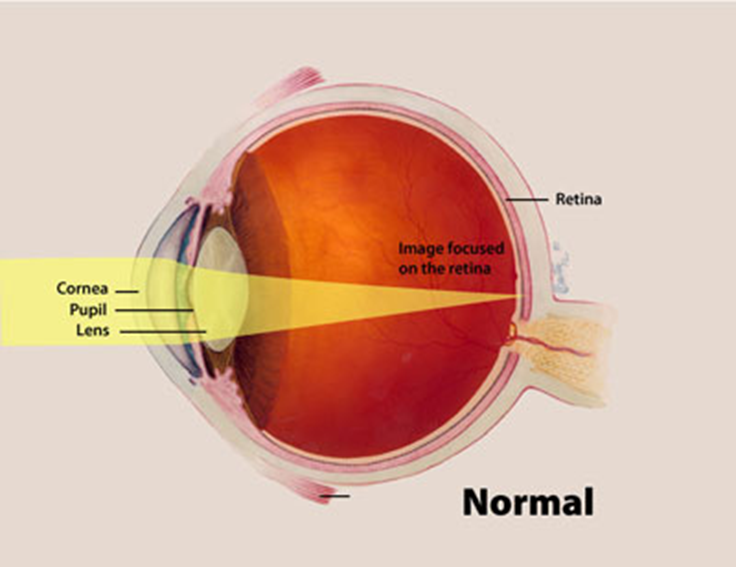2: Emmetropia, Accommodation & Presbyopia
Emmetropia
The eye acts as a 'system' of lenses similar to a camera, focusing light onto the retina. If a patient's eye is the correct shape, a distant object focuses clearly onto the retina and the eye is termed emmetropic (no refractive error).
Three ocular structures determine if light is brought to a focus on the retina:
- The cornea, which is the most powerful refractive surface.
- The lens, with variable focussing power.
- The axial length of the eyeball.

Source: National Eye Institute, National Institutes of Health. Creative Commons Licence.
Emmetropia (Normal Sight) - Parallel light from a distant object focuses on the retina and the image is seen clearly. When an object does not focus on the retina this refractive error is termed ametropia.
When light entering the eye doesn't come to a focus on the retina then a refractive error occurs. This is known as ametropia.
